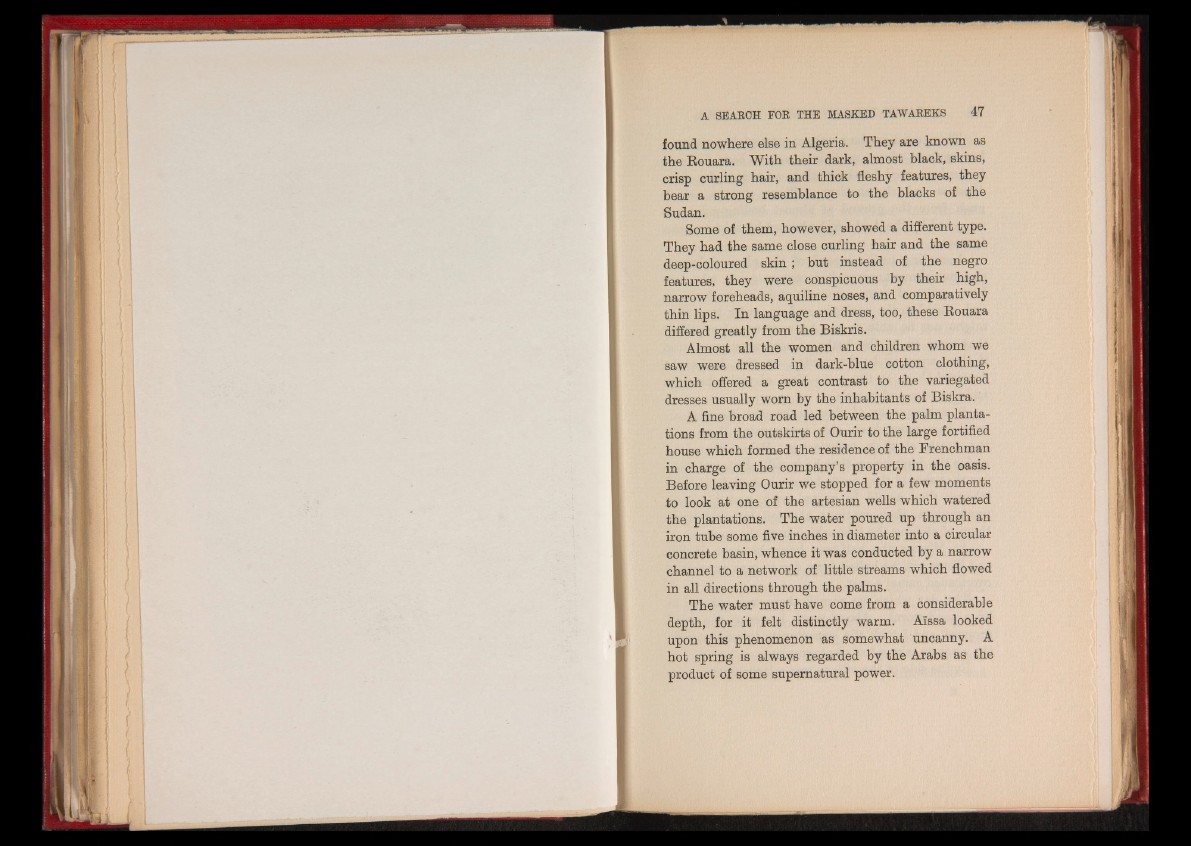
iw
found nowhere else in Algeria. They are known as
the Rouara. With their dark, almost black, skins,
crisp curling hair, and thick fleshy features, they
bear a strong resemblance to the blacks of the
Sudan.
Some of them, however, showed a different type.
They had the same close curling hair and the same
deep-coloured skin; but instead of the negro
features, they were conspicuous by their high,
narrow foreheads, aquiline noses, and comparatively
thin lips. In language and dress, too, these Rouara
differed greatly from the Biskris.
Almost all the women and children whom we
saw were dressed in dark-blue cotton clothing,
which offered a great contrast to the variegated
dresses usually worn by the inhabitants of Biskra.
A fine broad road led between the palm plantations
from the outskirts of Ourir to the large fortified
house which formed the residence of the Frenchman
in charge of the company’s property in the oasis.
Before leaving Ourir we stopped for a few moments
to look at one of the artesian wells which watered
the plantations. The water poured up through an
iron tube some five inches in diameter into a circular
concrete basin, whence it was conducted by a narrow
channel to a network of little streams which flowed
in all directions through the palms.
The water must have come from a considerable
depth, for it felt distinctly warm. Alssa looked
upon this phenomenon as somewhat uncanny. A
hot spring is always regarded by the Arabs as the
product of some supernatural power.